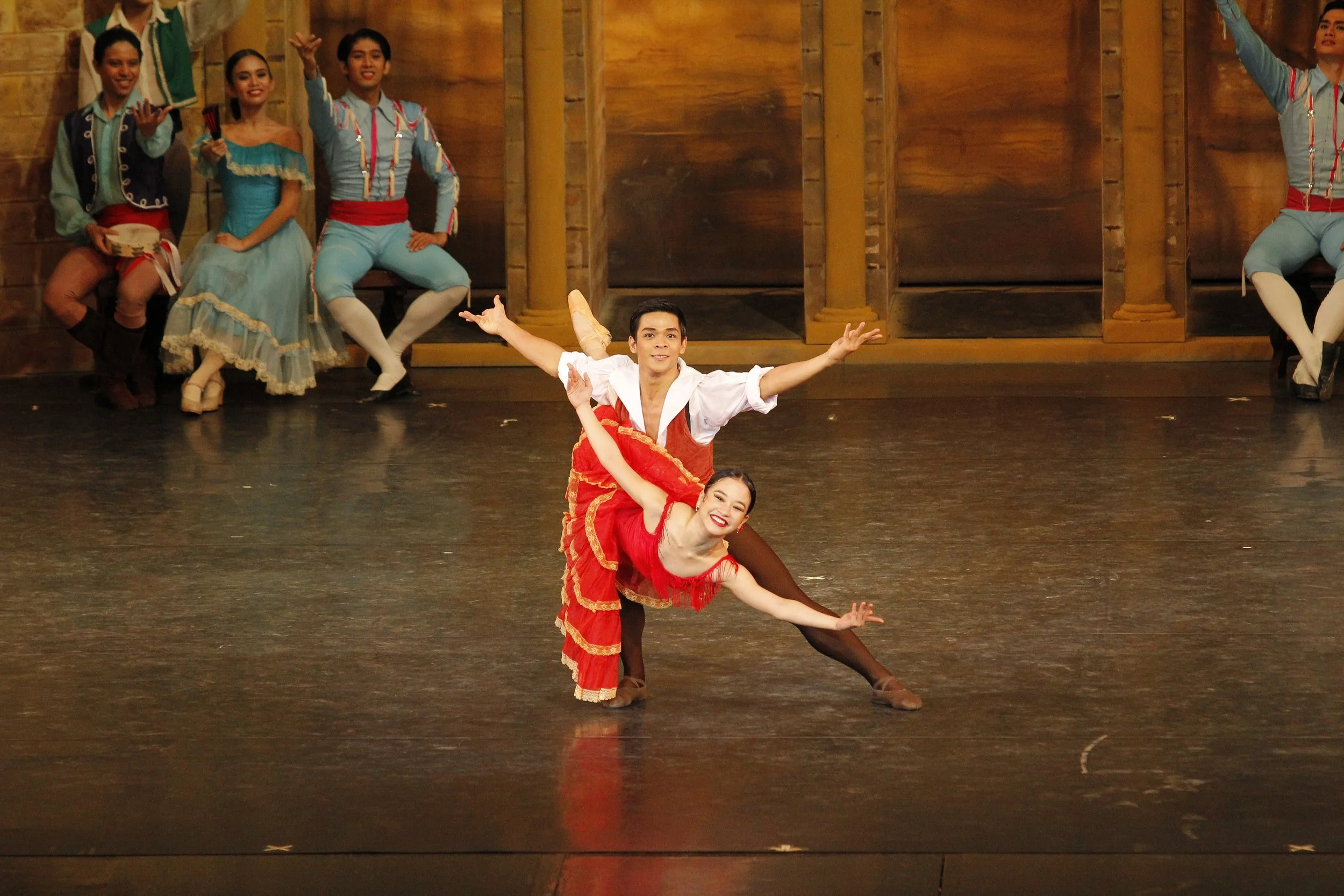Olé! Don Quixote fun facts: #4 – That Spanish flair
As Ballet Manila prepares to bring back Don Quixote in May – the second offering in its 25th performance season – we share assorted trivia about the beloved classic, tidbits from the company’s past performances and artistic director Lisa Macuja-Elizalde’s long history with it, along with select photographs from the Ballet Manila Archives. The series is a celebration of this happy ballet, a showcase for the bravura Spanish-inspired style featuring show-stopping technical feats by the ballerina and her danseur in the lead roles of Kitri and Basilio.
Lisa Macuja dances her first full-length Don Quixote opposite Farouk Ruzimatov as a soloist of the Kirov Ballet in 1984. Photo from the Ballet Manila Archives collection
That Spanish flair. Marius Petipa’s Don Quixote (1869) represents the choreographer’s knowledge of Spanish dance and culture which he gleaned from three years spent in Spain. In 1843, he was offered the position of premier danseur at the King’s Theatre in Madrid, giving him an opportunity to perform in and tour various parts of the country. The immersion inspired him to create short works with Spanish themes, such as Carmen et Son Toréro (Carmen and the Bullfighter), La Perle de Séville (The Pearl of Seville), L’Aventure d’une Fille de Madrid (The Adventures of a Madrileña), La Fleur de Grenada (The Flower of Grenada), and Départ Pour la Course des Taureaux (Leaving for the Bull Races). Don Quixote, Petipa’s grand ballet in five acts, would prove to be his most famous work in the genre showcasing what he imbibed from those years being exposed to colorful town fiestas and rousing bullfights, and along the way watching and learning traditional Spanish dance.
Don Quixote represents choreographer Marius Petipa’s knowledge of Spanish dance and culture. In this Ballet Manila staging in 2017, Mark Sumaylo and Abigail Oliveiro dance as Espada and Mercedes. Photo by Ocs Alvarez
Top photo: Scenes like this one in Don Quixote were most likely inspired by the town fiestas that Marius Petipa experienced in the 1840s while in Spain. Lisa Macuja-Elizalde and Osias Barroso dance the leads in this 2004 Ballet Manila production. Photo by Ocs Alvarez






